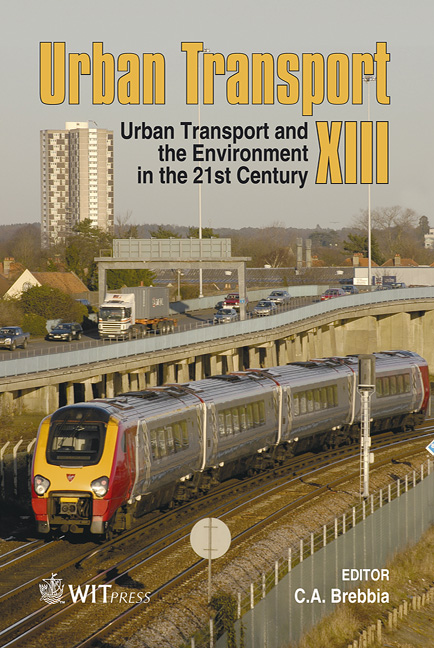Trip Distribution Forecasting In Fuzzy Multi-commodity Transportation Networks
Price
Free (open access)
Transaction
Volume
96
Pages
11
Published
2007
Size
583 kb
Paper DOI
10.2495/UT070191
Copyright
WIT Press
Author(s)
F. Zandi
Abstract
In this paper, the author models trip distribution in fuzzy multi-commodity transportation networks, and indicates its dimension consideration. First, current trip distribution is learnt by an approximation function for each commodity. Then, a quadratic model is used to calibrate these functions. The implementation of the proposed model is demonstrated through the use of a numerical example. Keywords: fuzzy, multi-commodity, approximation function, trip distribution. 1 Introduction Trip distribution constitutes the second stage in the transportation planning process. Trip distribution models are used to determine the number of trips between each pair of zones when the number of trips generated/attracted by particular zones is known. Continual utilization of this model will enable future capital needs to be updated and identified. Generally, such information is essential to a variety of operational tasks; failure analysis to capacity planning and traffic engineering. A survey of these models may be divided into the following types. In gravitybased models, regression techniques are applied to calibrate the parameters. The models are divided into linear [1–3] and nonlinear [4, 5] regression models. The pioneers of these models are Willumsen [6] and Van Zuylen [7, 8]. Statistical models include the constrained generalized least squares model [9] and constrained maximum-Likelihood models [10–13]. Another group has been developed based on sort computing techniques such as fuzzy logic and neural network [14, 15]. They compared their model based on multilayer perception neural network with maximum-likelihood doubly-constrained models. Then, Kalic and Teodorović [16] attempted to develop a technique for modeling trip
Keywords
fuzzy, multi-commodity, approximation function, trip distribution.





